
Looking for a creative, easy, and fun project to try with kids? How about a sweet, quick DIY Father’s Day, hostess, or end-of-year teacher gift? Terrariums are the answer! The materials needed to create these tiny natural environments are both inexpensive and readily available. Moreover, these mini gardens are perfectly suited for getting little hands involved. From the planning of the design to the care of the finished terrarium, kids of all ages will enjoy this project from start to finish.
Step 1: Gather Supplies
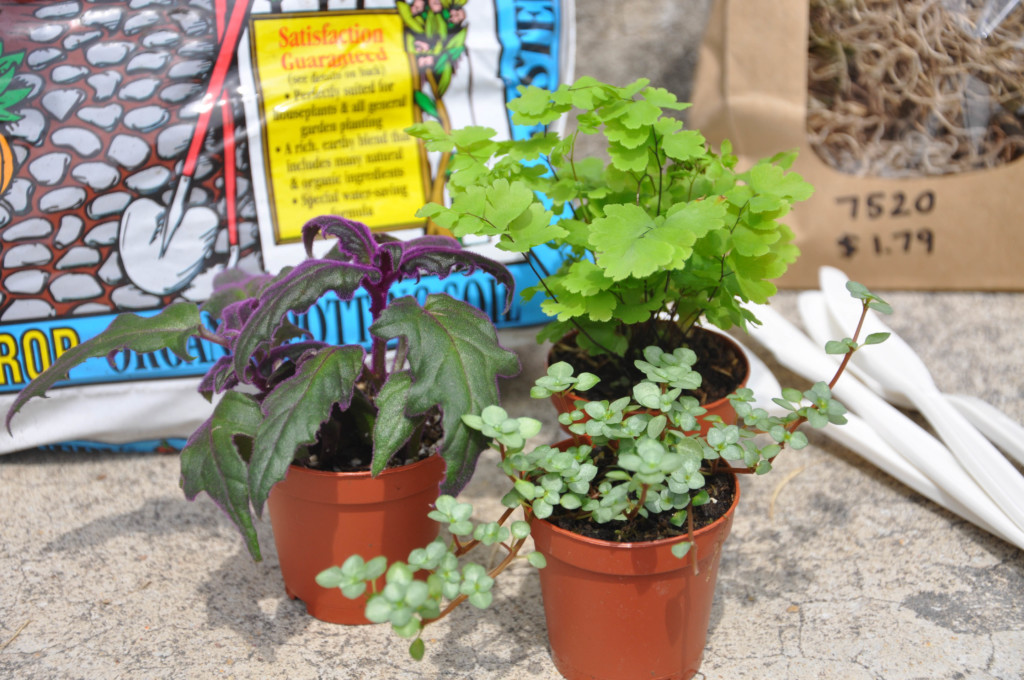
After recently packing up our entire household ahead of a big move, I noticed that we had been storing a ton of small glass vases (ones that had accompanied past floral arrangement deliveries). As I was debating whether to continue to store, donate, or recycle all this glass, I realized they would make perfect terrarium containers. If you don’t have an extra, unused vase stashed in the back of a kitchen cabinet, any small glass container will do (an old mason jar, a candle votive, or an apothecary jar to name just a few). Of course, you can also find tons of gorgeous terrarium containers on-line. For the other materials, my son and I headed to our local nursery.
Supplies Needed
- clean glass container
- small rocks (gravel size)
- charcoal pieces (smaller flakes are perfect for terrariums)
- dried moss
- potting soil
- small terrarium plants
- small to medium-sized rocks or pebbles (for decorative accents)
- spoons (to add the layers)
Step 2: Layer Drainage Materials

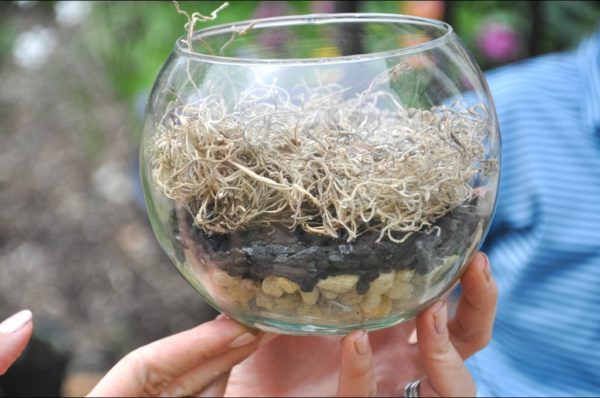
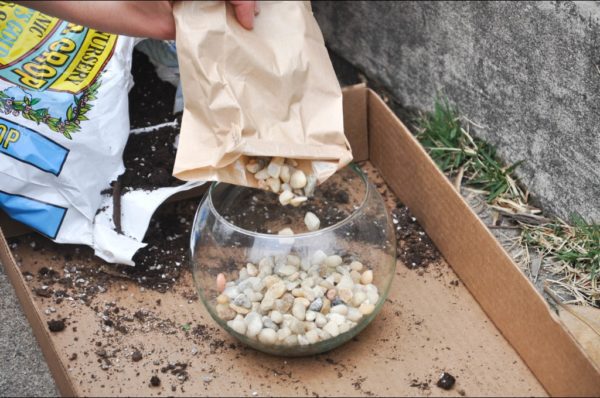
Since terrarium containers do not have holes for excess moisture to escape, these mini gardens rely on specific materials to create proper drainage. Layering the materials in the right order will keep plant roots happy (aka not too soggy). Additionally, from an aesthetic perspective, it creates gorgeous and visually interesting bands of color that can be seen through the container. Rather than using regular garden shovels, we scaled down our tools and grabbed plastic spoons to carefully add in the materials. The spoons are just the right size for tiny hands! My son especially loved scooping up big spoonfuls of the dirt and charcoal.
Materials Layered in Order from Bottom to Top
- small rocks or gravel
- charcoal
- dried moss
- potting soil
Step 3: Choose Terrarium Plants
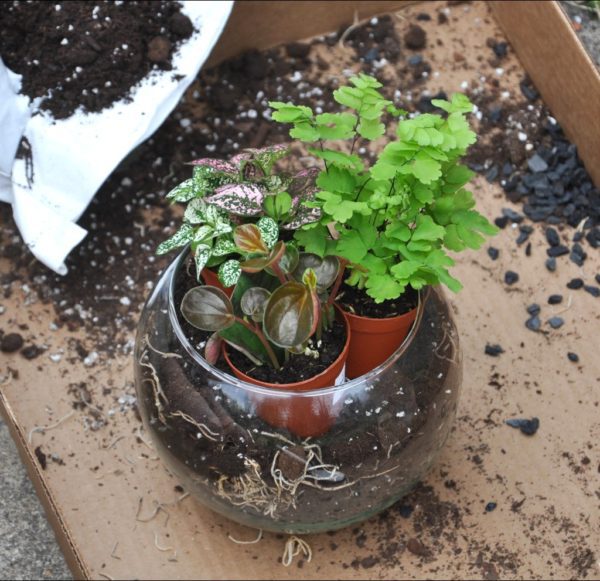
The key to picking out terrarium plants is to group them by environment. For example, one terrarium could be humidity-loving plants (such as ferns), while another container could be happy-when-dry succulents. All the plants in one terrarium should respond well to the same amount of water. Fun tip: check out whether a local nursery has a special section for terrarium plants. Choosing the plants is another terrific opportunity to get kids involved. Have them think about the overall design: How many plants can fit in the container? Which color leaves look interesting next to each other? Should you mix tall and low plants? Let the kids take charge here! Designing a terrarium is a wonderful way to talk about concepts such as composition, palette, and texture.
Step 4: Add Decorative Touches

After carefully adding a few more spoonfuls of potting soil around the plants, lightly tamp down the dirt with fingers. At this point, the terrarium is good to go. If desired, however, including some ornamental detail can really personalize a container. My son and I sprinkled more small rocks around the base of our plants. A well-placed medium to large rock would also look great, as would smooth and shiny pebbles. Tufts of dried moss, seashells, and beach glass are also terrific options. Looking to get creative? Ask a child to paint several rocks to add to the terrariums when dry (just make sure to use a water-safe paint).
Step 5: Provide the Right Amount of Water
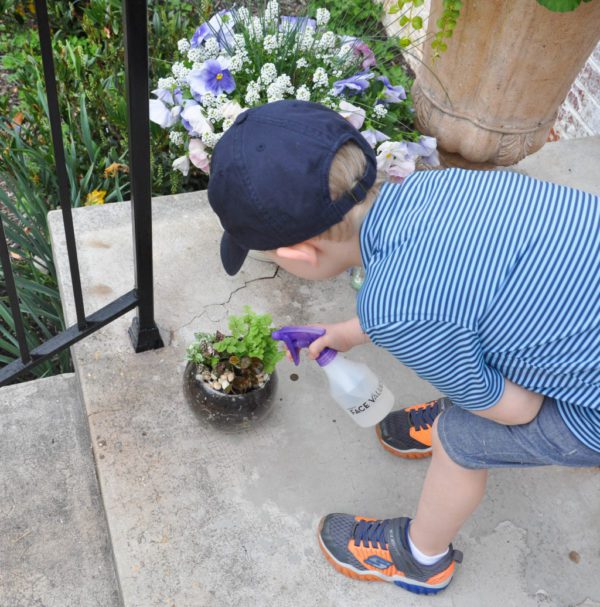
Terrariums are fun and easy to maintain. One way to water a terrarium is with a spray bottle (make sure the nozzle is turned to the mist setting). Not only does my son love using the mister, its also a great way to work on finger strength in young kids. When it comes to the right amount of watering, it’s all about balance. In general, most plants don’t want to be soaked in water all the time and they also don’t want to stay completely dry for too long either. My son and I give our plants (and the soil) a quick check every day to determine if they might need a spray. The amount of watering will also depend on how much direct sunlight the plants receive and how quickly the water evaporates in the glass container. A drooping plant may indicate overwatering, whereas a plant with leaves that look crisp and brown may be receiving too little water.
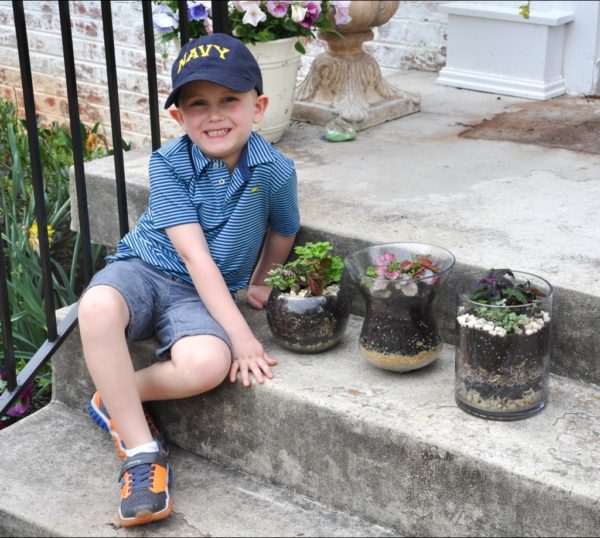
Happy terrarium building! The next time an occasion calls for a fantastic handmade gift, consider making one of these tiny gardens. The recipient will not be disappointed!















